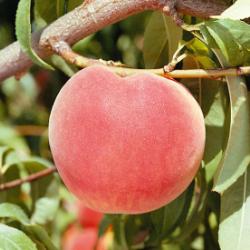Shock Therapy: A Critical Look at Nutrients and Farm Management
By: Van Slack, Agricultural Resource Specialist for Muskingum SWCD
Times are pretty good in agriculture right now. Livestock prices are good, commodity prices are good but the cost of feed, seed, fertilizer, and chemicals are high and increasing. It may come as no shock that times can change and are changing rather rapidly. The concerns over water quality in Grand Lake St. Marys, the Western basin of Lake Erie and the Gulf of Mexico have put agriculture under new scrutiny. The possibility of increased regulation on agriculture is of great concern. Just because those areas are in another part of the state or U.S. does not mean we will not feel the effects in southeastern Ohio.
It is always good when you can invest in yourself and your operation. Knowledge is power. As agricultural producers, when given the tools and resources to make good decisions, we are up to the task. You have an awesome opportunity to participate in a three part series called “Shock Therapy: A Critical Look at Nutrients and Farm Management”. This series will give you the tools and resources to meet future challenges.
The first meeting is Saturday, March 16 at the Zanesville Welcome Center from 9:00 a.m. - 4:00 p.m. The speaker for the day is Dave Pratt, President of Ranch Management Consultants Inc. Dave co-founded the California Grazing Academy and teaches Ranching for Profit Schools. Dave has taught schools in the United States, Canada, Mexico, Australia, and Africa. Dave was also a Range and Livestock Advisor for the University of California Cooperative Extension Service for 15 years. Dave’s mission statement is “Healthy Land, Happy Families, and Profitable Businesses.”
Dave will be teaching two sessions. The morning session will be a profitability workshop and the afternoon will be on cell grazing (rotational grazing for us in the East). I asked Dave, “What will the participants learn at this workshop?” Dave stated, “They will see things differently. To some this may not sound like much but it is the most important thing that can happen. We call it See-Do-Get. In order to get different results you have to do things differently. But you won’t do things differently until you see things differently.”
Dave went on to say that “in the morning session, people will see why their farm is not a business and why it is a problem both financially and personally. What it takes to transform a farm into a business and why they should do it. What is profit? They will realize the difference between economics and finance and the reason most people make the mistake of putting finance first. That there are only three ways to increase profit in a business and figuring out which applies to you will be discussed. In the afternoon session, participants will see the difference between overgrazing and overstocking and the five principles of cell grazing. They will also see how others have applied those principals to reduce costs, improve health of their farms, increase profits, and learn what is involved in applying those principles on their farms. They will see that economics and ecology are not two separate topics but one…econology? Eco – nomics?”
There are two additional sessions scheduled for Thursday, April 4 and Tuesday, June 18. For the first person registering from an operation, the fee is $50.00 for the first two sessions. For each additional registration from the same operation, the fee is $25.00 for the first two sessions. The Tuesday, June 18 workshop is free and open to the public although we encourage you to attend all three sessions. With your registration and attendance of at least the first two meetings, each operation will receive lunch on the June 16, a soil probe, an Ohio Agronomy Guide, a Cover Crop Guide, and either a Forage Guide or Corn and Soybean Guide for a combined total value of $98.00. This is a great return on your investment, not to mention the knowledge you will gain to better yourself and your operation.
This program is made possible through a nutrient reduction outreach grant from the Ohio Soil and Water Conservation Commission and ODNR Division of Soil and Water Resources. The Muskingum and Guernsey SWCDs and OSU Extension of Muskingum, Guernsey, and Noble Counties are coordinating the events.
Go to our educational page to download a registration form.

















